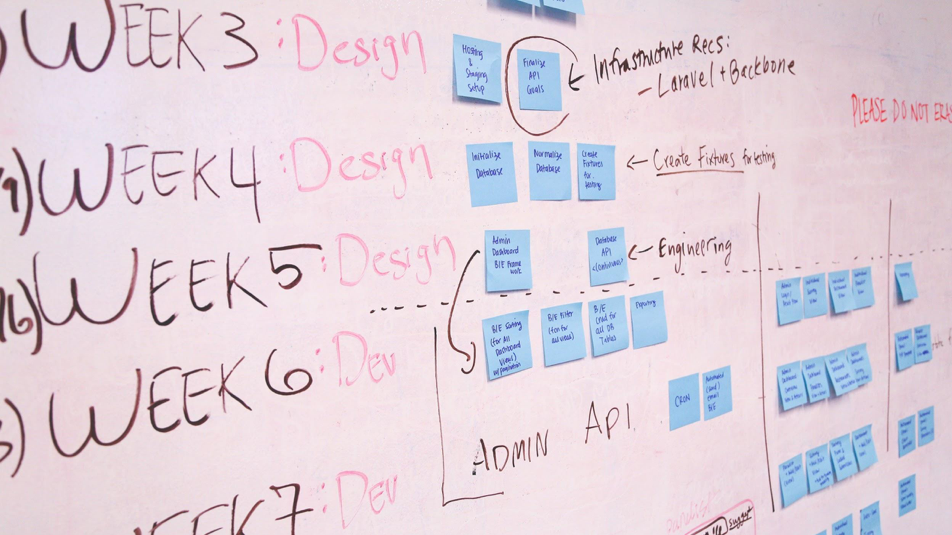
Tips to Optimize Every Aspect of the Software Development Process, by Jori Hamilton
Software development requires precision and careful planning. Through every stage of the process, problems that delay projects and throw off your timeline for proper optimization at launch can arise. Fortunately, however, the right preparation and mindset can help you avoid these problems.
From the preparation stage onward, software developers can optimize the development process to produce ideal results. But such optimization requires clear objectives and effective team coordination.
To best achieve optimization in every aspect of software development, follow these simple tips and strategies.
1. Clarify Objectives from the Preparation Stage
Every stage of software development comes with specific requirements and points of focus. From the preparation stage all the way through continued maintenance, these requirements and goals should be clearly detailed for your development team. By making clarity one of your top priorities, you will better ensure quality features within highly optimized software.
Your team and your clients should come together to answer the questions of what your software should do and how it should work. These answers will serve as a grounding force for all communication and tasks to come, ensuring that every member of the team retains the client’s vision for the project.
2. Choose the Right Tools for the Job
Your team efforts are only as good as the tools you use to develop your software. From virtual team check-ins and communication platforms to specific programming languages, every decision you make will have a direct impact on the optimization of your software.
The modern workforce operates remotely more than ever, so your communication platforms and their use must be clearly determined from the start. Platforms like Slack or Microsoft Teams can assist in this aspect of development.
Additionally, you will want to agree to coding standards per the ideal programming language for your software project to streamline cohesion and efficiency. Every programmer has their own style, but following an agreed-upon set of best practices can help mitigate confusion and bugs. Style guides like PEP 8 for Python can be immensely useful for setting these standards.
3. Coordinate Your Team
Team coordination is a vital part of optimizing software development. If you’ve completed the first two tips effectively, this will be easier to achieve as you’ll have clear objectives and helpful tools ready in your corner.
Coordinating your team then requires efficient delineation of tasks with specific objectives. One great way to go about this is to break down your tasks into user “stories.” These stories are development objectives detailed from a user’s perspective so that the developer better understands the purpose of the task.
Break down and assign work through small stories that make up a day and a half or so of work to keep your team more efficiently on time and on task.
Looking for Project Management Training?
4. Branch Your Feature Design
Along the lines of team coordination, you want to avoid wasted work and problematic practices throughout the development process. This means branching your feature design so that overlapping code does not cause problems.
Some development teams still operate on one centrally stored copy of the same code. As a result, programmers have to work around co-workers breaking the features they are currently working on or dealing with bugs created from code overlaps. Branching your feature design means that individuals or teams are clearly focused on one specific feature, which they build in a separate copy of the code and integrate during a merge.
Branch your feature design in separate, mergeable copies of code so that every team member can work on clearly defined tasks without having to counter changes made by others.
5. Keep it Simple
Whether you are a beginner learning new software development strategies or a veteran programmer, the need for simple code never diminishes. Software development can be better optimized at every stage when you keep in mind the acronym KISS (keep it simple . . . you know).
This means not duplicating code or needlessly storing code for later use. If you aren’t using it now, there’s a good chance you never will. Write concise and simple code that can be easily understood by a teammate without them needing to track you down.
6. Don’t Optimize Too Soon
One of the common time-wasting problems many software development teams run into is over-optimizing sections of your software too soon. If no major problem exists, your time will be better spent moving on rather than attempting to streamline speeds or implement caching techniques.
This is where the agile software development approach can be especially useful. Agile is a common approach to software creation that focuses on adaptability and usability of processes and tools over meticulous planning and documentation. By taking the agile approach, you ensure that software functions and flows together to benefit the user before attempting to polish every feature individually.
Ensure that your code functions and move on until you are ready to test a function as a whole. When you have all the needed systems working together, you can better iron out the kinks and increase speed and efficiency. If done too soon, other processes could disrupt optimization already completed, meaning duplicated work and lost time. Follow an agile approach to minimize lost time and effort.
7. Automate Your Testing
Finally, to better your quality assurance practices throughout the development process, you must build automated testing strategies that work for all your new builds. Merging code inevitably results in something breaking. Manual testing requires a slow investigation process to track down exactly where the problem exists.
With automated testing, however, you can consistently run automatic procedures that alert you to problems without having to take lengthy investigatory breaks. Dedicate at least one member of your team to the understanding and application of this invaluable aspect of software development to more seamlessly optimize throughout the project.
Learn Software Development with Total Training Online Now!
Conclusion
Software development is a lengthy and detail-oriented process that can be easily derailed without practicing good optimization techniques. From the planning stages of your project to every launch or update, your team must come together with clear goals and communication.
These seven tips can help smooth the development process, allowing you to better coordinate a team and streamline your code throughout. As a result, you’ll develop more efficient software while saving time, money, and resources.
Image Source: Pexels
About the Author:

Jori Hamilton is an experienced writer residing in the Northwestern U.S. She covers a wide range of topics but takes a particular interest in covering topics related to business productivity, marketing strategies, employee training and engagement, and web development. To learn more about Jori, you can follow her on Twitter.























Thank you for the article. Nowadays, it is essential to carry out the correct planning of your activities. And you can’t waste your time. Since then, it will not be possible to recycle it. You need to do everything right and strive for purity of thought, even in the greatest chaos. Don’t waste very little of your time.
This is very interested article!
This is very interested article!